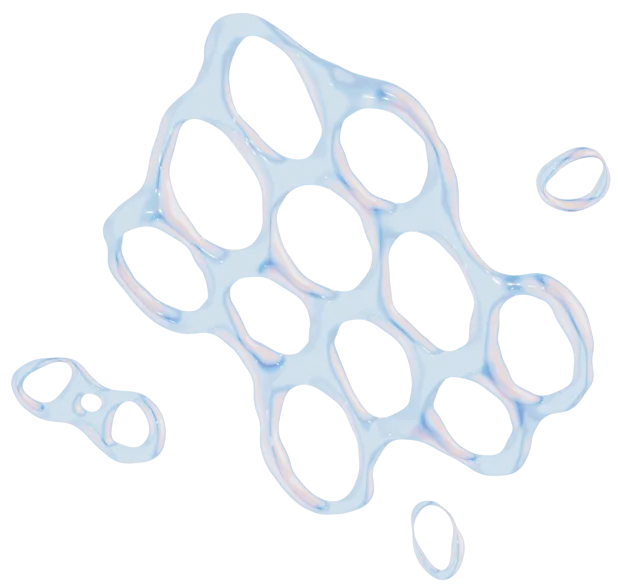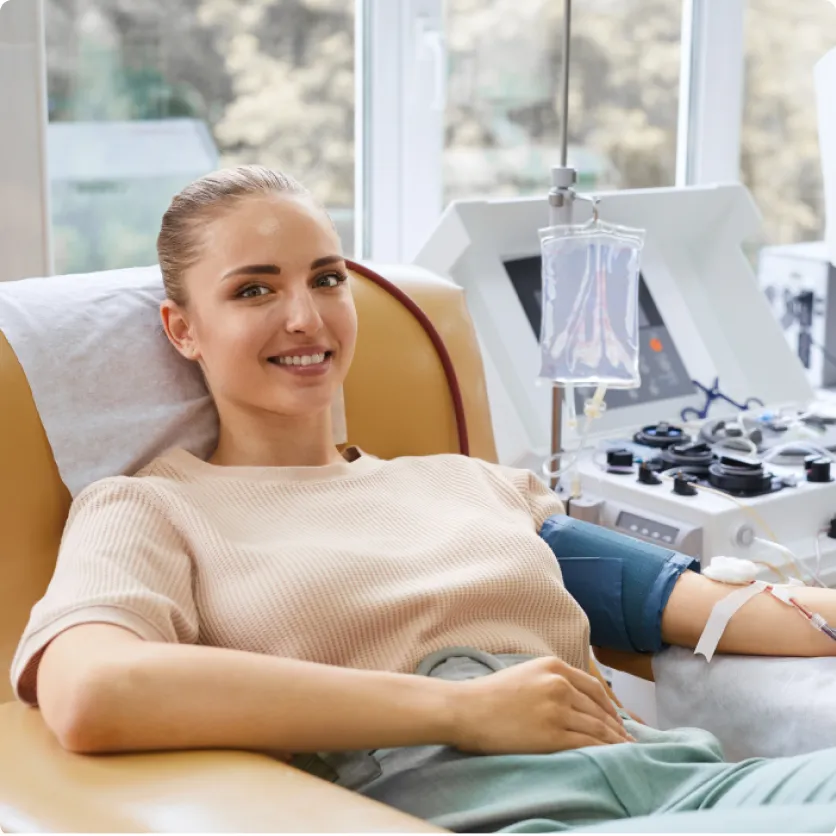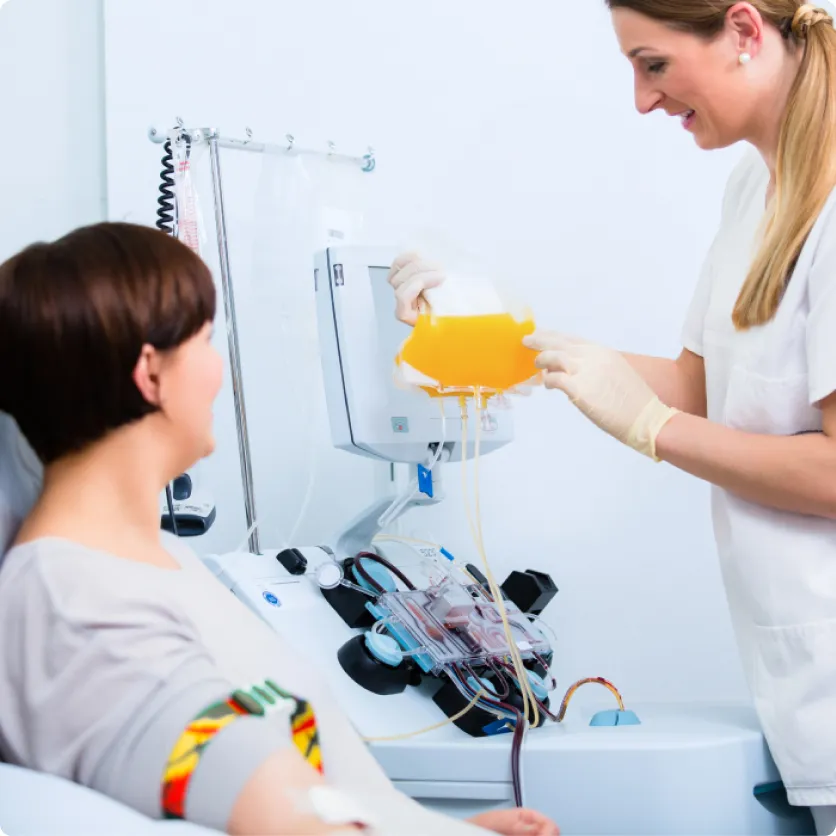Plasma
Plasma protein therapies that treat life-threatening disorders and illnesses consist of one main ingredient, plasma. These therapies are uniquely valuable to patients. Without this element with critical functions, treatment would be unavailable, and many lives could have been lost. Our strategic goal for plasma is “ensuring the availability of safe, high-quality plasma for fractionation.”



What is plasma
Plasma is the single largest component of human blood that acts as a transporting medium for cells and a variety of substances vital to the human body. It contains water, salts, enzymes, antibodies, and other proteins. Plasma also carries out many critical functions, including fighting diseases, and is, therefore, essential for numerous therapies.
92%
1%
7%



Plasma collection and manufacturing
Plasma collection
.png)
Plasma manufacturing

Fractionation
Plasma is pooled and processed through a process called "fractionation" that employs time, temperature, pH, and alcohol concentrations to extract specific therapeutic proteins. These are then subjected to various purification methods and viral inactivation and removal processes to further ensure their safety and efficacy.
Plasma therapies
Plasma protein therapies are treatment methods that are relied upon by patients with well-defined medical conditions. Plasma-derived therapies and their recombinant analogs, collectively referred to as plasma protein therapies, are unique, biologic medicines.
- Immunology-Immunodeficiencies
- Neurology-Immune-mediated diseases
- Hematology
- Dermatology
- Infection prevention
- Regulation of overreacting immune system also known as immune modulation
- Improved quality of life
- Increased life expectancy
- Bleeding from trauma
- Over dosage of anticoagulants
- Liver disease
- Bleeding Disorders
- Reduced bleeding
- Improved quality of life
- Increased life expectancy
- Hereditary Angioedema
- Improved quality of life
- Increased life expectancy
PLASMA PROTEIN
PLASMA PROTEIN
Clotting factors
USED TO TREAT
OUTCOMES
Plasma for your everyday medicines
Plasma is not only essential for treating rare and chronic diseases — find out more about how plasma is used for everyday medicine, emergencies, surgical and preventive medicine.

SAFETY & QUALITY
These unique therapies treat well-defined medical conditions, replacing missing or deficient proteins found in plasma, to allow their recipients to lead healthier and more productive lives. The patient populations that rely upon plasma protein therapies generally require regular infusions or injections for the duration of their lives.
National Donor Deferral Registry
The National Donor Deferral Registry (NDDR) is a database of permanently deferred plasma donors in North America. All donors who test “reactive” for the viral agents of HIV, HBV, and HCV are added to the database and are prohibited from donating plasma at licensed and certified centers in the U.S. and Canada. This is an essential measure for the industry to ensure the safety of the final therapies.
Patients notification system
The Patient Notification System (PNS) is a free, confidential, 24-hour communication system that notifies the patient and registrants about withdrawals and recalls of plasma protein therapies. This empowers the patient and registrant to receive important information directly via email, telephone, text messaging, or fax.
Plasma availability
With PPTA’s web-based system, you will be able to find a comprehensive and monthly distribution of data for the appropriate plasma protein therapies.














